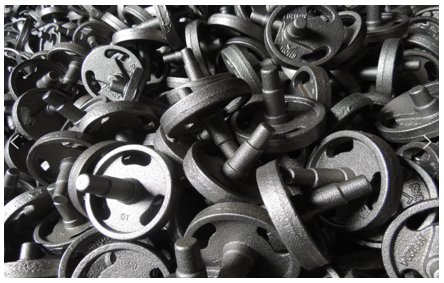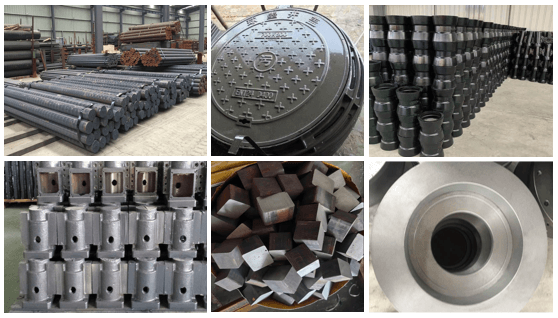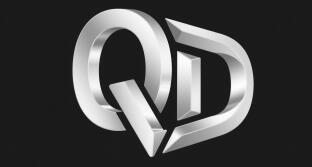Cast iron, especially gray cast iron, offers excellent vibration damping, wear resistance, and cost efficiency. It is widely used in basic industries. QD is a source foundry and exporter of iron castings.

What is Cast Iron
Cast iron is an alloy made mainly of iron, carbon, and silicon. Its carbon content is usually above 2%. It has good fluidity and casting properties.
The manufacturing process is relatively simple. It mainly involves melting the iron, pouring it into a mold, and letting it cool. This process is mature and cost-effective.
Cast iron is widely used in machinery manufacturing, construction, automotive, and energy sectors. It also has a high recycling rate, supporting sustainable development.
Irreplaceable Advantages of Cast Iron
Cast iron offers several core advantages:
| Advantage | Description | Application |
| Good Vibration Damping | Internal graphite structure absorbs and disperses vibration energy. Reduces noise and fatigue damage during equipment operation. | Machine tools, engine bases, precision instruments |
| Strong Wear Resistance | High carbon content with uniform microstructure. Provides high surface hardness and wear resistance, extending component life. | Guide rails, hydraulic components, brake discs |
| Lowest Cost | Low raw material price. Simple casting process with high production efficiency. Offers the most competitive overall cost among cast metals. | General machinery, infrastructure projects |
| Good Thermal Stability | Maintains dimensional stability and mechanical properties at high temperatures. Suitable for thermal working environments. | Boilers, furnace parts, automotive exhaust pipes |
| Easy Machining | Excellent cutting performance. High machining efficiency, enabling rapid prototyping of complex components. | Custom parts, prototype development |
Additional Notes:
- Vibration Damping: The flake graphite in gray cast iron acts as a natural damper. This is hard for many new materials to match.
- Wear Resistance: Alloying or heat treatment can further improve cast iron’s wear resistance. This meets demanding working conditions.
- Cost-Effectiveness: Its mass production capability makes the per-piece cost very low. It suits budget-sensitive projects.
QD implements strict quality control. This ensures the iron castings we supply achieve the best balance between performance and cost.
Main Types: Gray Cast Iron vs. Ductile Cast Iron
Gray cast iron and ductile cast iron are the two most common types. They suit different applications:
| Property | Gray Cast Iron | Ductile Cast Iron |
| Graphite Form | Flake | Spherical |
| Tensile Strength | Lower (150-400 MPa) | Higher (400-900 MPa) |
| Toughness | Brittle, poor toughness | Good toughness, similar to steel |
| Vibration Damping | Excellent | Good |
| Machinability | Excellent | Good |
| Typical Applications | Machine tool bases, cylinder heads, brake discs | Crankshafts, gears, pipe fittings |
Detailed Comparison:
- Gray Cast Iron: Offers good vibration damping and easy machining. Often used for machine tool bases and hydraulic valve blocks. It absorbs vibrations effectively.
- Ductile Cast Iron: Treated with magnesium or cerium to make the graphite spherical. This increases strength and toughness. It is commonly used for high-stress parts like automotive crankshafts and wind power equipment.
QD selects the right material based on customer needs. This ensures gray iron and ductile iron parts deliver maximum performance.
Typical Application Fields
Machine Bases and Beds
Excellent vibration damping ensures stable machine tool operation. It reduces machining errors and improves precision.
QD provides customized designs for such components to enhance overall rigidity.
Hydraulic Valve Blocks
Wear resistance and sealing performance meet the demands of high-pressure hydraulic systems.
We use precision casting technology to ensure the internal channels of valve blocks are smooth and defect-free.
Brake Discs
Gray cast iron’s heat capacity and wear resistance make it ideal for automotive brake systems.
QD’s brake discs undergo strict bench testing to ensure safety and reliability.
Pulleys and Gears
Ductile cast iron’s high strength and toughness suit transmission components, extending service life.
We offer surface treatments like quenching or coating to improve wear resistance.
Infrastructure Components
Including manhole covers, pipes, and brackets.
QD supports large-volume orders with timely delivery and controlled costs.

Cast Iron Manufacturing and Quality Control
Melting and Pouring: We use electric arc or induction furnaces for melting. We strictly control chemical composition. This ensures molten iron purity.
Mold Design: We use CAD/CAM technology to optimize molds. This reduces defects like shrinkage and gas holes.
Heat Treatment: We adjust microstructure and properties using processes like annealing and normalizing. This meets different application requirements.
Inspection and Testing: Methods include ultrasonic flaw detection, hardness testing, and metallographic analysis. We ensure every product meets standards.

QD uses automated inspection systems and an ISO quality management system. This ensures full process control. Our technical team is skilled at solving complex casting problems. We provide technical support and custom solutions.
Why Choose QD’s Cast Iron?
For businesses seeking stable, durable, and cost-optimized parts, iron castings are the preferred choice. When selecting a supplier, these points are especially important:
- Experience and Expertise: QD has years of experience in producing iron castings. We are familiar with various process standards.
- Flexible Production Capacity: We respond efficiently from prototype development to mass production.
- Comprehensive After-Sales Support: We provide technical consultation, quality assurance, and logistics services. This ensures a worry-free experience for our clients.
Contact QD to learn about our range of iron casting services. We offer free consultation and customized solutions. You will receive high-quality iron castings and one-stop solutions.
FAQ
1. Why are iron castings lower in cost?
Raw materials for cast iron are low in cost. The casting process is mature and efficient. Mass production further lowers the cost per unit.
2. What are the main performance differences between gray iron and ductile iron?
Gray iron has better vibration damping and machinability, but lower strength. Ductile iron has higher strength and toughness, making it more suitable for load-bearing parts.
3. Which industries commonly use iron castings?
They are widely used in machinery manufacturing, automotive, energy, construction, and heavy industries. Examples include machine tools, brake discs, and pipes.
4. How to ensure consistent quality of iron castings?
We implement strict process control, chemical analysis, non-destructive testing, and standardized production. This ensures stable performance in every batch.
5. Are iron castings easy for secondary machining?
Yes. Cast iron (especially gray iron) has excellent machinability. It supports common operations like turning, milling, and drilling. The process is efficient.
6. What value-added services does QD provide?
We offer full-process services. These include design optimization, material selection, precision machining, and surface treatment. We also provide test reports and technical support.
